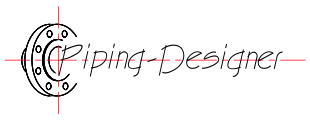Equivalence Symbols
- This is a list of the most common equivalence symbols.
|
|---|
| Symbol | Definition | Example |
|---|
| \(=\) |
equal to |
\(5+4=9\) |
| \(\ne\) |
not equal to |
\(5+5 \ne 9\) |
| \(\equiv\) |
identical to |
\(a \equiv b\) |
| \(\not\equiv\) |
not identical to |
\(a \not\equiv b\) |
| \(\overset{\underset{\mathrm{\land}}{}}{=}\) |
estimates |
|
| \(\overset{\underset{\mathrm{\lor}}{}}{=}\) |
equiangular to |
\(\triangle ABC \overset{\underset{\mathrm{\lor}}{}}{=} \triangle XYZ\) |
| \(\overset{\underset{\mathrm{\frown}}{}}{=}\) |
corresponds to |
|
| \(\triangleq\) |
equiangular or equal to |
\(\triangle ABC \triangleq \triangle XYZ\) |
| \(\overset{\underset{\mathrm{def}}{}}{=}\) |
equal to by defination |
\(a \overset{\underset{\mathrm{def}}{}}{=} b\) |
| \(\overset{\underset{\mathrm{m}}{}}{=}\) |
measured by |
\(a \overset{\underset{\mathrm{m}}{}}{=} b\) |
| \(\overset{\underset{\mathrm{?}}{}}{=}\) |
questioned equal to |
\(a \overset{\underset{\mathrm{?}}{}}{=} b\) |
| \(\sim\) |
similar to |
\(\triangle ABC \sim \triangle XYZ\) |
| \(\nsim\) |
not similar to |
\(a \nsim b\) |
| \(\approx\) |
approximately equal to |
\(a \approx b\) |
| \(\cong\) |
congruent or equivalent in size and shape |
\(\triangle ABC \cong \triangle XYZ\) |
| \(\ncong\) |
congruent but not equivalent in size and shape |
\(\triangle ABC \ncong \triangle XYZ\) |
| \(\doteq\) |
approaches the limit |
|
| \(\doteqdot\) |
geometrically equal to |
|
| \(:=\) |
is defined to be |
\(a := \{2, 4, 6, 8 \}\;\) means \(\;a\;\) is defined to be set \(\;\{2, 4, 6, 8 \} \) |
| \(\fallingdotseq\) |
approximately equal to or the image of |
|
| \(\risingdotseq\) |
image of or approximately equal to |
|
| \(\bumpeq\) |
difference between |
\(a \bumpeq b\) |
| \(\Bumpeq\) |
geometrically equivalent to |
|
| \(\asymp\) |
equivalent to |
\(a \asymp b\) |
| \(\therefore\) |
therefore |
\( a=b\; \therefore\; b=a \) |
| \(\because\) |
because |
\( a=b\; \because\; b=a \) |
| \(:\) |
ratio |
\(4\) to \(5\) or \(4:5\) or \(4/5\) |
| \(::\) |
porportion |
\(4/5 :: 20/25\) scale factor \(4\) |
| \(>\) |
greater than |
\(5 > 4\) |
| \(\gg\) |
much greater than |
\(500 \gg 4\) |
| \(<\) |
less than |
\(4 < 5\) |
| \(\ll\) |
much less than |
\(4 \ll 500\) |
| \(\ge\) |
greater than or equal to |
\(\measuredangle XYZ \ge \measuredangle ABC\) |
| \(\le\) |
less than or equal to |
\(\measuredangle ABC \le \measuredangle XYZ\) |
| \(\geqq\) |
greater than over equal to |
\(a \geqq b\) |
| \(\leqq\) |
less than over equal to |
\(a \leqq b\) |
| \(\gneqq\) |
greater than but not equal to |
\(5 \gneqq 4\) |
| \(\lneqq\) |
less than but not equal to |
\(4 \lneqq 5\) |
| \(\gtrsim\) |
greater than or equivalent to |
\(b \gtrsim a\) |
| \(\lesssim\) |
less than or equivalent to |
\(a \lesssim b\) |
| \(\gnsim\) |
greater than but not equivalent to |
\(5 \gnsim 4\) |
| \(\lnsim\) |
less than but not equivalent to |
\(4 \lnsim 5\) |
| \(\gtrless\) |
greater than or less than |
\(b \gtrless a\) |
| \(\lessgtr\) |
less than or greater than |
\(a \lessgtr b\) |
| \(\succ\) |
succeeds or higher rank than |
\(b \succ a\) |
| \(\prec\) |
precedes or lower rank than |
\(a \prec b\) |
| \(\nsucc\) |
does not succeed or not higher rank than |
\(a \nsucc b\) |
| \(\nprec\) |
does not precede or not lower rank than |
\(b \nprec a\) |
| \(\succcurlyeq\) |
succeeds or equal to |
\(b \succcurlyeq a\) |
| \(\preccurlyeq\) |
precedes or equal to |
\(a \preccurlyeq b\) |
| \(\succsim\) |
succeeds or equivalent to |
\(b \succsim a\) |
| \(\precsim\) |
precedes or equivalent to |
\(a \precsim b\) |
| \(\gtreqless\) |
greater than or equal to or less than |
\(b \gtreqless a\) |
| \(\lesseqgtr\) |
less than or equal to or greater than |
\(a \lesseqgtr b\) |
| \(\Rightarrow\) |
implies if then - \(\; a \Rightarrow b\;\) means if \(\;a\;\) is true then \(\;b\;\) is also true, if \(\;a\;\) is false then nothing is said about \(\;b \) |
\( a = 3 \Rightarrow a3 = 9\;\) is true, but \(\;a3 = 9 \Rightarrow a = 3\;\) is in general false since \(\;a\;\) could be \(\;−3\) |
| \(\rightarrow\) |
same as above |
same as above |
| \(\Leftrightarrow\) |
if and only if - \(\;a \Leftrightarrow b\;\) means \(\;a\;\) is true if \(\;b\;\) is true and \(\;a\;\) is false if \(\;b\;\) is false |
\(a + 2 = b - 5 \Leftrightarrow a = b - 7\) |
| \(\leftrightarrow\) |
same as above |
same as above |

